
Qutub Minar an awe-inspiring 800 years old world’s tallest brick minaret (victory tower) with Unmatched Architectural Grandeur. This landmark, always fascinate locals and foreigners alike. This Unesco World Heritage is the earliest surviving monument in the city and one of its kind ever built in the world. Maybe that is that reason. That this is the most visited monument in the city. Isn’t these enough reasons to include this prime tourist attraction into your itinerary when you plan your trip to Delhi/India?

Five dynasties of sultans ruled over and from Delhi on a large stretch of the Indian subcontinent for over 300 years. Sultans were from a tribe, who escaped from Mongol Empire and emigrated to India in 1192 AD and brought Islam with them to north India. A clan of Tajik origin that hailed from ghur (a mountainous region of modern-day Afghanistan) thus known as the Ghurids. The construction of the Qutub Minar was planned and financed by them as a symbol of their victory over the Hindu land.
Sultans expanded into modern-day India and quickly took control of a substantial part of the country. The Ghurids annexed the Multan and much in western Punjab in 1175 AD, the northwestern regions around Peshawar in 1177AD, and the region of Sindh in 1185 AD. In 1192, Qutb al-Din Aibak a general of the Ghurid king Muhammad Ghori conquered Delhi and implemented a Ghurid governorship in the province. He declared himself sultan after the death of his master Muhammad Ghori and established the Mamluk dynasty. In his governorship, the construction of and the congregational mosque, the Qutub Minar, began in 1193AD.
Qutbuddin Aibak’s parents were Turks from Turkistan So he is considered the founder of the Turkish state in India, As the first Ottoman ruler of Delhi. From 1206 to 1290, 9 rulers ruled in the First Dynasty, Iltutmish Ilbari a Turk and the 3rd ruler is considered to be the real founder of the Delhi Sultanate.
The establishment of the Khilji dynasty is an important period in Indian history, founded by Jalaluddin Firoz Shah Khilji in 1290 and a total of 5 rulers ruled in this dynasty for 30 years. In the Khalji dynasty, Alauddin khalji was an ambitious and important ruler who was the nephew of Jalaluddin Khilji, after the death of Alauddin’s father, Jalaluddin had brought up and made his son-in-law and also gave the jagir of Kada Manikpur to Alauddin, but he killed Jalaluddin for the throne.
This Muslim Turkish dynasty was founded In the year 1321 AD, by Ghazi Tughlaq was given the title of Ghiyasuddin Tughlaq. The Tughlaqs were able to maintain their rule for a long time as they had strong allies like Turks, Afghans and Muslim warriors from South Asia. The Tughlaq dynasty was remembered for ruling with torture, brutality and rebellion, which resulted in the rapid disintegration of the dynasty’s territorial reach after 1335 AD.
The dynasty reached its zenith during a military campaign led by Muhammad bin Tughlaq between 1330 to 1335. Mohammad bin Tughlaq is remembered as a ruler who made many bold experiments and showed a keen interest in agriculture. He was deeply versed in religion and philosophy and was critical and open-minded. He had a keen interest in philosophy, astronomy, logic and mathematics.
When Khizr Khan occupied the Delhi throne, his position was very weak therefore he did not accept the title of Sultan and was satisfied with the name of ‘Reyat-i-Ala’. The most agitated political activities were seen during the Sayyid dynasty, but all those events were of very poor quality. Therefore the power of the Sayyid dynasty was destroyed in suppressing the rebellions. During the period of this dynasty, the Delhi Sultanate was reduced to a radius of only 200 miles.
The Lodi dynasty was an Afghan dynasty founded by Bahlul Lodi when Alauddin Alamshah of the Sayyid dynasty left the throne, at that time Bahlul was the Subedar of Lahore and Sirhind. He captured the throne of Delhi with the help of his vizier Hameed Khan. Bahlul Lodhi achieved a lot and after his death, his son Sikandar Lodi on the throne expanded his empire. he was called the most successful ruler of this dynasty. Sikandar Lodi proved to be a worthy ruler of the Lodi dynasty was the first Sultan who made Agra his capital.
His Youngest son Ibrahim Lodi became the ruler of the Lodi dynasty after the death of Sikandar in 1517 and was the last Lodi Sultan of Delhi. He possessed the qualities of an excellent warrior but was treacherous and rude in his decisions and actions. He ruled India from 1517-1526 and was then defeated by the Mughals, That established a new dynasty in India, which we call the Mughal Empire, which ruled India for three centuries.

Qutub Minar is the tallest brick minaret in India, Its’s construction started over the ruins of the First City of Delhi (Lal Kot) around 1199 AD by Qutb-ud-din Aibak. Qutub Minar was constructed over centuries by many rulers. But The victory tower is named after Qutb-ud-din Aibak although he wasn’t able to build it beyond the first story. His successor and the 3rd sultan Shams-ud-din Iltutmish added three more stories to the minaret. in 1369 lightning damage the top floor of the tower and was reconstructed by Firoz Shah Tughlaq. Who also built the 5th story to the tower.
In 1803, the minaret again experienced extreme harm in a quake. Major Robert Smith, who was from the British Indian Army, took up the repair work. He felt free to install a pillared capula on the fifth story of the tower, consequently loaning the tower its 6th story. the Governor-General of India in 1848, Henry Hardinge eliminated additional floors and reinstalled close to the minaret. Entry to the minaret has been confined from 1981 after a mishap.
Today, Qutub Minar is one of the best attractions for tourists. In 1993, the complex gained the status of a UNESCO World Heritage Site for its cultural and historical significance. Recently The Government has started lighting up Qutub Minar with LED lights. One can see Qutub Complex at night glowing in LED lights from 7 pm to 9 pm. the complex is lighted nicely so one can move around is convenient. No doubt that the complex looks amazing at night and offers a chance for photographing in a different light than daytime.
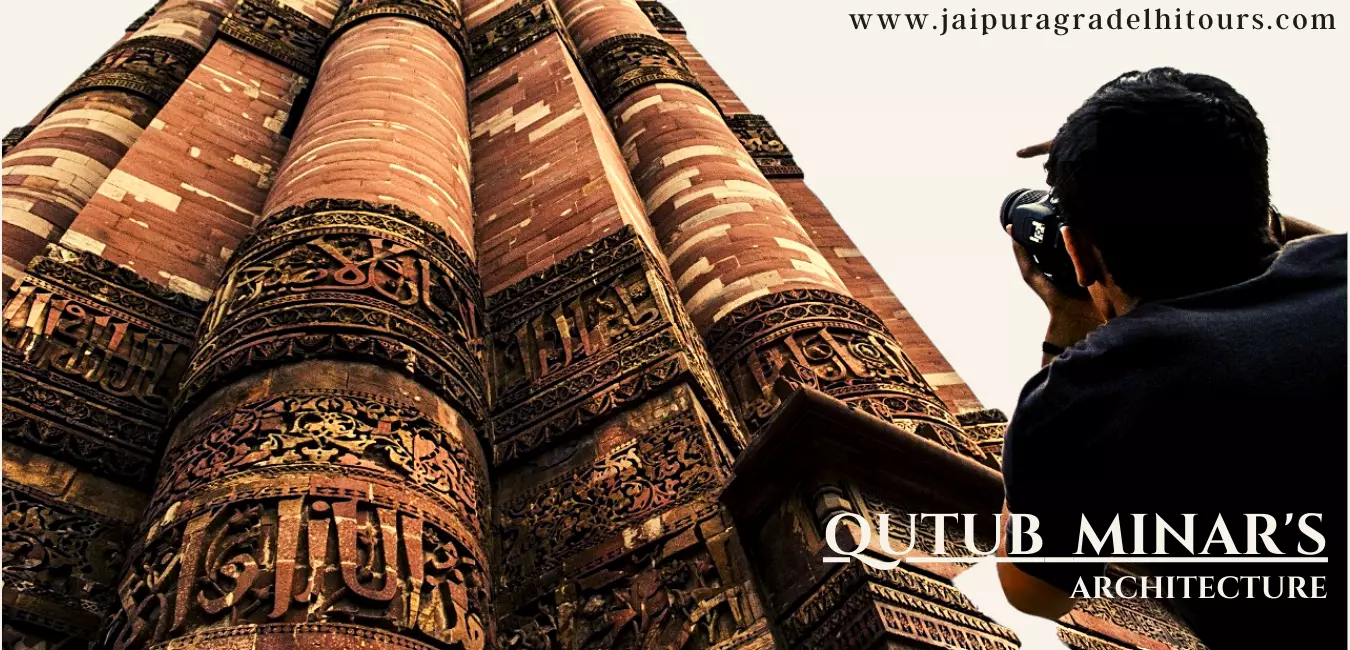
At the arrival of Muslims from the Islamic west, they found the need to construct religious centres in India. Thus the region influenced Islamic religious architecture. In the sultanate period (1192-1526) the prevailing style of architecture was trabeate, employing pillars, beams and lintels with arches but Qutub Minar is unique in its architecture; these tower minarets were uncommon in South Asian-Islamic designs. However, it’s believed that Qutub Minar is not only highly influenced by local architecture but also by the Minaret of Jam in Afghanistan. Which makes it the earliest and best example of a fusion or synthesis of Hindu-Muslim architecture. The Minar served as a central marker to these new Muslim communities.
This magnificent 73 meters high Minar with a spiral staircase of 379 steps has a base diameter of 14.3 meters which narrows down to 2.7 meters at the top, displaying early Afghan architectural style. All stories of the minaret have projecting balconies with intricately designed brackets. While the first three stories are built in sandstone, the fourth one is purely made of marble, and the fifth one is a mix of marble and sandstone. The architectural styles from the base to the top also differ, thanks to the many rulers who used different materials, techniques, and decorations in the construction of it. There are inscriptions of the Quran on different parts of the tower.
The whole area at the Qutub Minar is called Qutub Complex. This UNESCO World Heritage complex contains myriad attractions for all the history buffs from the Delhi Sultanate at Mehrauli, Delhi.
After the Islamic conquest, Quwwat-ul-Islam Mosque was the first mosque to be built in Delhi.
To leave the imprint of his religion to the new territory Qutb al-Din Aibak Commissioned it to be built over the site of a large temple using spolia from 27 Hindu and Jain temples that’s why also known as the Might of Islam mosque
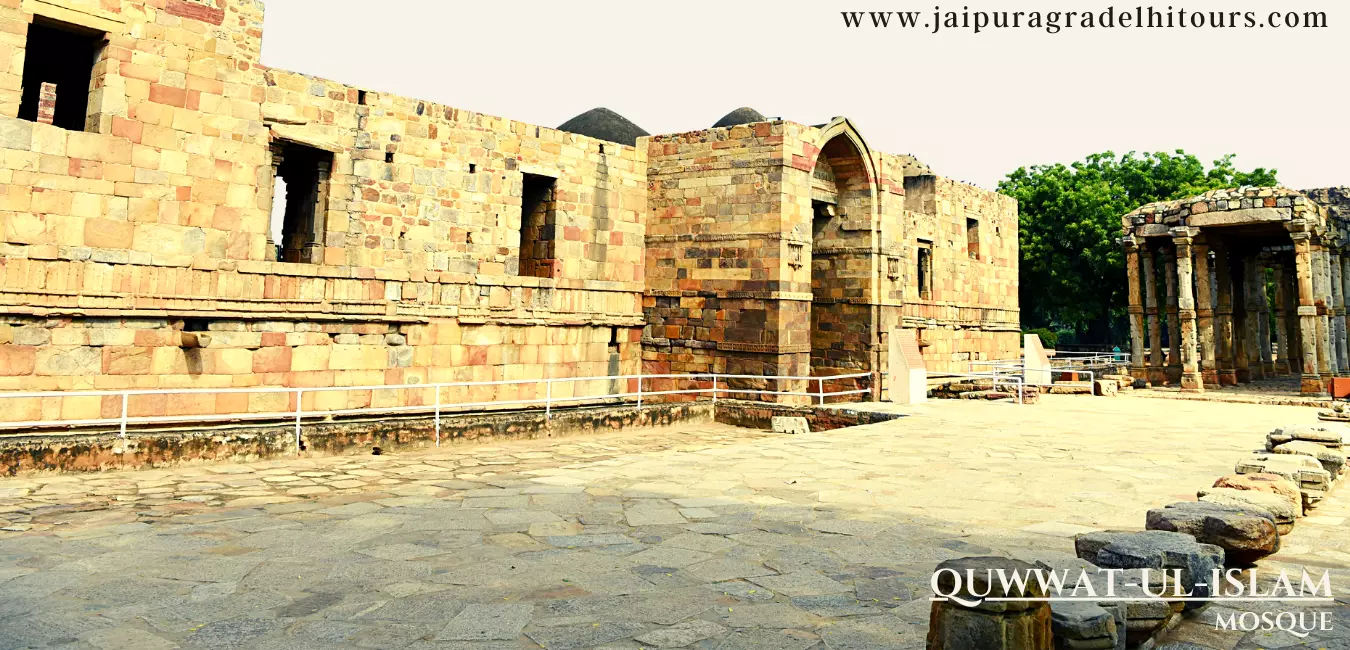
We have been reading about this Iron pillar since childhood. The most important thing about this iron pillar is that despite being more than 1600 years old, it does not get rusted.
It was built by King Chandragupta Vikramaditya II of the Gupta dynasty. According to a local belief, if you encircle the pillar with your hands, your wish comes true.

The southern entrance of the Quwwat-ul-Islam Mosque is known as the Alai-Darwaza.
This gateway was built by the second Khilji Sultan of Delhi in 1311AD. which was built on complete Islamic architecture.
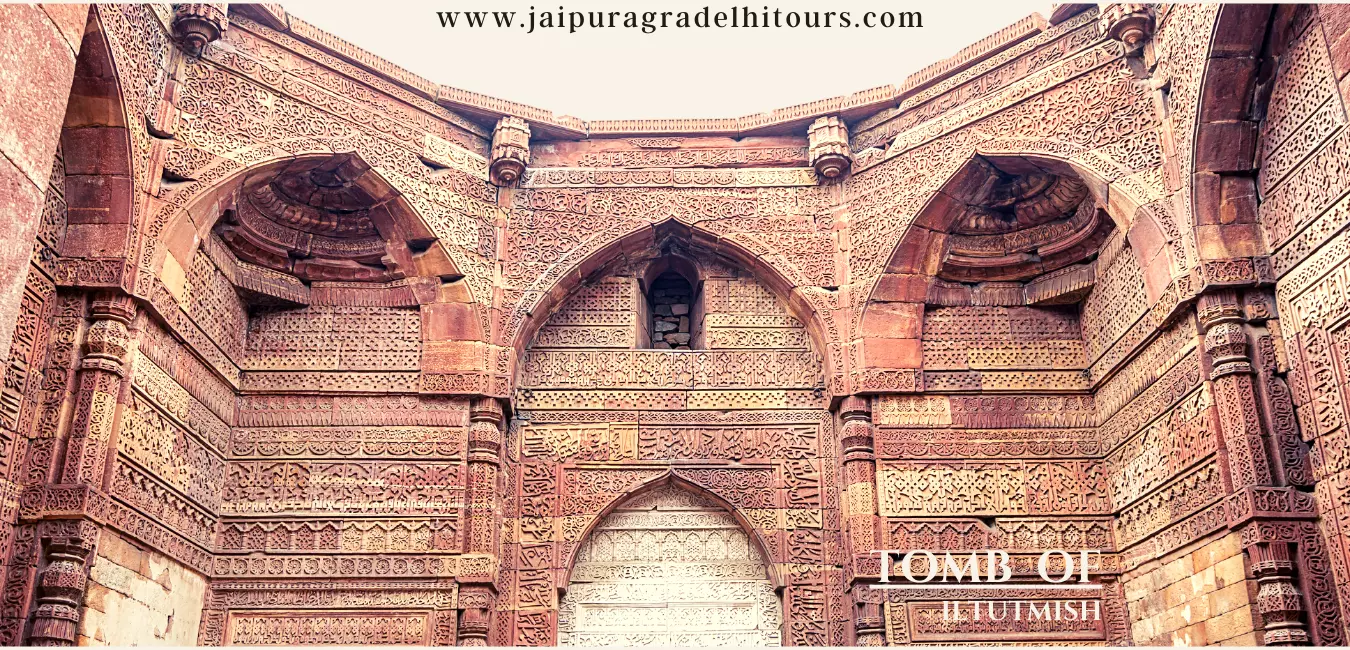
Iltutmish, the successor and son-in-law of Qutbuddin Aibak, who founded the slave dynasty, is also known for beautifying Delhi. It is in the north-western part of the complex. He himself built his tomb in 1235. This tomb was covered by a dome.
It is believed that this dome fell. After this, the second dome was built by Firoz Shah Tughlaq (1351-88). But, see the fate of the Sultan that even this dome could not last.

He was an imam (chief priest) Turkestan who came to India in the 15th century. He built his own tomb Close to the Alai Darwaza and was buried in it in 1538.
He was believed a direct descendant of the prophet Muhammad. He settled in India during the time of Sikander Lodi and became the chief priest of the Quwwat-ul-Islam mosque.
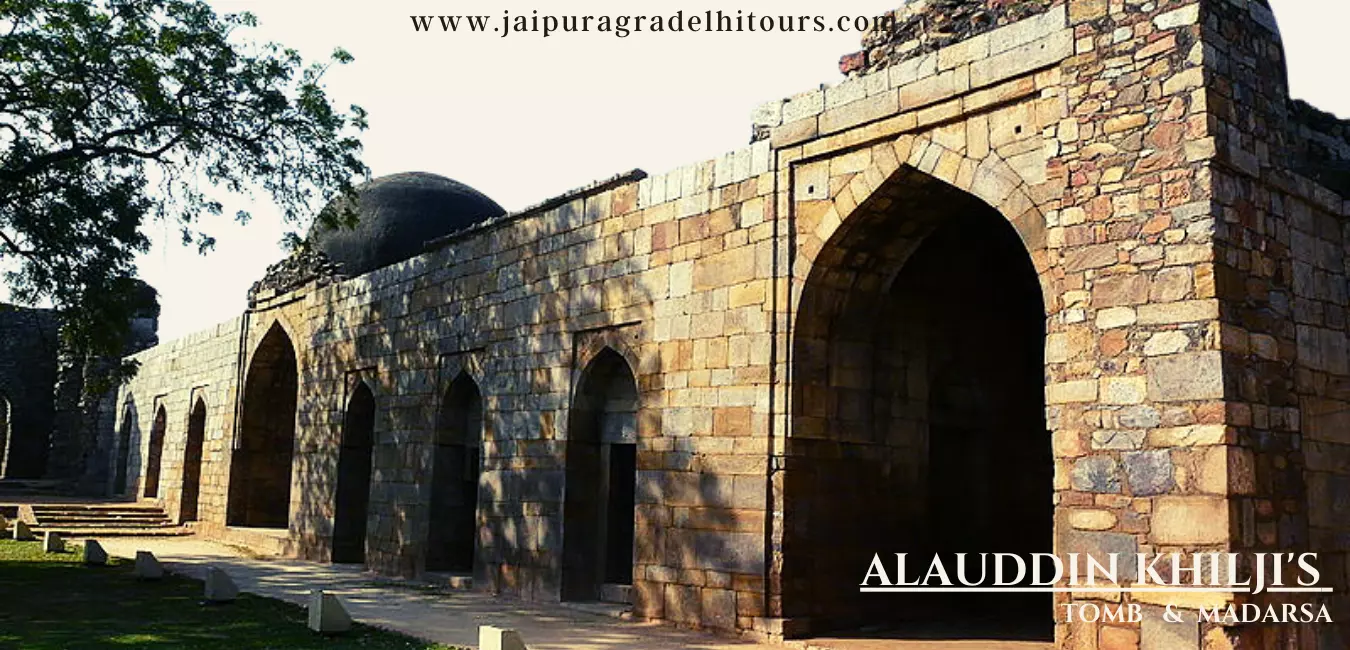
Madrasa (Islamic school) and his own tomb were built by Alauddin Khalji around 1300 AD. located southwest of the Qutub Minar This is the first instance of such tomb-madrasa combination in India.
There are seven small cells and two high-domed rooms. The cells were used as the apartments and rooms as classrooms.

Alai Minar was started by Alauddin Khilji to be double the height of Qutub Minar as he had high ambitions and wanted to be credited for many monuments of grandeur and splendour. However, after 80 feet the minar was left incomplete as the king died in 1316 AD and the construction was not taken up by the descendants, eventually the minar was left unaddressed and neglected.
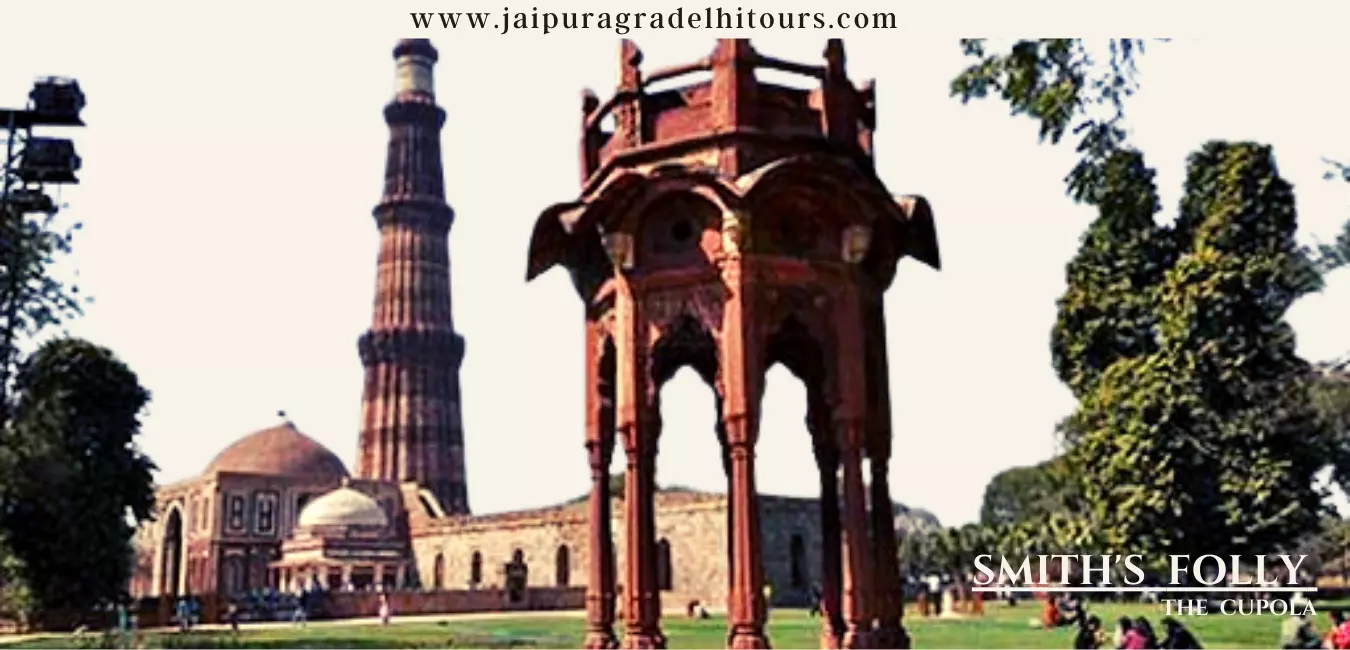
In 1803 Qutub minar was damaged by an earthquake and Major Robert Smith repaired it with an addition of an Indo-Islamic cupola with Bengali features.
For this, he had massive criticism and after 10 years the Governor-General got the cupola removed and which used to adorn the top of the Qutub Minar, is now standing in a corner.

During the British period, Gordon Sanderson was superintendent of the Archeological Survey of India He documented many books on the history of Delhi and its monuments. In his memoir, his colleagues from ASI installed a white marble sundial.
WhatsApp us